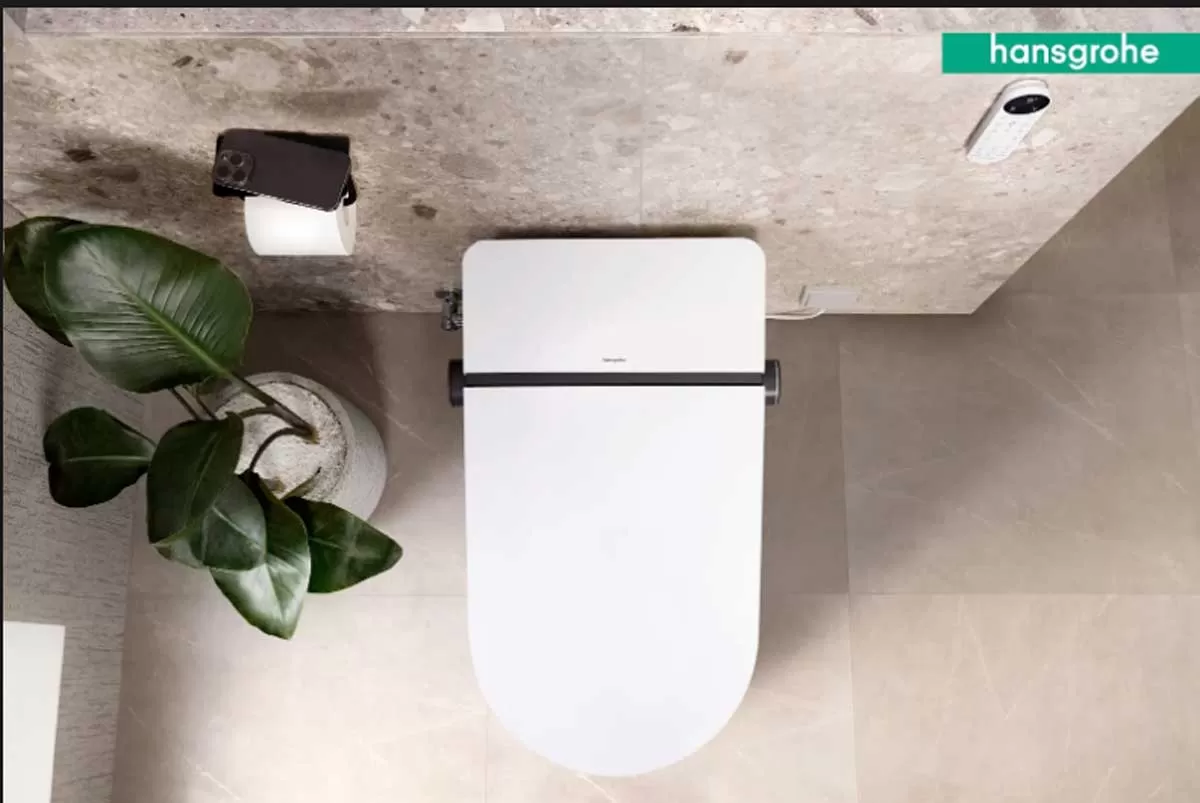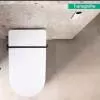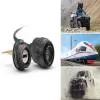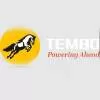Engineer Jagvir Goyal tells us more about this perennial favourite for earthmoving.
Bulldozers once ruled the construction equipment scene. Although these robust, tank-like assemblies have been overshadowed a little since the arrival of multitaskers like hydraulic excavators, front loaders and backhoe loaders, they remain ubiquitous and popular. Today, bulldozers are visualised as heavy equipment to push large quantities of material or earth away. In simplest terms, they are like tractors fitted with a dozer blade. Over the years, manufacturers have made them powerful and sturdy machines that don’t just push earth but even heavy machines, vehicles, dismantled structures and even encroachments.
Basic structure
Basically, bulldozers have a tractor and blade mounted on them. The blade can be of different shapes and sizes. Earlier, they were manually operated but are now hydraulically controlled. This hydraulic control helps vary the depth of the cut in the surface and material. Tracks can be of normal size or extra wide to give more bearing area and work in loose soils or muddy areas. Extra wide tracks help bulldozers work in swamp areas.
Additions and attachments
Over time, a number of additions have been made to the basic bulldozer. Many shapes of blades have been devised. Transmission has been made automatic or manual, as per the choice of the user; a GPS system has been added; and rippers have been added to the rear of the dozers.
The blades
Made of metal, dozer blades are hydraulically controlled to adjust the depth of the cut to be made or for angular push of the material. The blades have a cutting edge that wears out with time and can be replaced. The height and width of the blades can be varied. Basically, these are classified as straight and universal blades. Straight blades have no lateral curve and no side wings, while universal blades are curved and have large side wings. Straight blades are easiest to operate. While these can move heavy materials over short distances, universal blades can move large quantities of materials over long distances. Universal blades are also called Ublades.
More varieties
More varieties of blades are now produced by modifying these two types. A combination of straight and universal blades is available. Then, there are blades produced and designed for particular jobs like landfill handling, site clearance, to work in angular fashion for cutting ditches or in road construction, to cut off trees and vegetation and to remove even the roots of
trees. These customised blades enable the completion of specific jobs at fast speeds.
Rippers
Rippers help loosen hard earth surface or material for easy dozing. A ripper is a single shank or multiple shank device that has claws fitted with tungsten alloy tips. These can be replaced on wearing out. The single shank is preferred for hard materials or surfaces. For loose or notsohard materials, multiple shanks are better. Rippers are hydraulically operated and their operating efficiency depends a lot on the skill of the operator who can use lower gears, do cross ripping, protect the tips and ripper during track slippages, identify the type of tips required for the material to be ripped and change the angle of shanks as per site requirements.
Rippers are of parallelogram and hinge type. Shank wise, these are classified as single shank and multiple shank rippers. Single shank rippers are also called giant rippers. Further, rippers can be fixed and variable type. While fixed ripper shanks move only up and down during digging, variable rippers can have a variation in the angle of shanks as per ground position.
Getting the best
Skill and patience are keywords to draw the best performance from dozers. Unequal loading on blades, high speed of working, ignoring maintenance schedule in view of the dozer giving no trouble, taking acutely sharp turns and twists, making the dozer stationary on slopes and considering the dozers magic machines that can ride any surface or do any odd jobs often result in faster wear and tear and replacement of parts. Like every other machine, dozers too must be tended with care and maintained as per the advice of the equipment manufacturer.
Key factor
The material to be moved, its type and density are key factors in the selection of a dozer for its displacement and determination of its output. The more the horse-power of the dozer per cubic metre of the material to be moved, the more its output, potential or speed of movement.
Checkpoints
While purchasing a dozer for your equipment fleet, the following factors should be weighed judiciously: nature of work; output or efficiency; range of speed; engine horsepower; type of blade; type of rippers; turning radius and angle position; operating weight; maintenance schedule; consumption of consumables and nonconsumables; past performance of the model and manufacturer; and resaleability.
Operator’s cabin
Today, increasing attention is being paid to the operator’s cabin to ensure a comfortable working environment coupled with maximum visibility and ease in reaching and operating the buttons and levers. To reduce noise and contain vibrations, hydraulic control valves are mounted on the frame with rubber pads. The operator’s seat is made adjustable with special attention to the design of the backrest. Even the armrests are adjustable. A single joystick controls all steering functions, direction and speed changes and is provided to the left of the operator.
Electronic monitoring system
Today, bulldozers are provided with an electronic monitoring system supported by a micro computer that controls all meters and gauges and provides a wide indication range for precise and quick reading. Komatsu provides a closed centre load sensing hydraulic system that discharges only the required amount of oil from the pump; reduces fuel consumption; and makes the blade lever stroke directly proportional to blade speed irrespective of load or speed and results in complete control of the machine.
Tired dozers
While crawler dozers have their own plus points like working on loose soil, in swamps and marshy areas, tired dozers have the advantage of travelling at higher speeds; can traverse roads without damaging the pavement; and can cover larger and longer stretches. The operator too feels less stressed in them. Another major advantage is that they can be transported from one area to another just by driving them. Crawler dozers need to be transported on carriers and can’t travel long distances. However, the choice has to be made by keeping in mind the soil conditions of the working area, nature of the job and the stretch of the area.
Bulldozer manufacturers
Many equipment producers have dozers on their product list. Caterpillar once enjoyed the distinction of being the best producer of bulldozers. Now, many companies like Komatsu, JCB, Liebherr, Case and John Deere display a range of dozers, some produced for specific jobs.
The Caterpillar D10 tractortype dozer was introduced by the company in 1977 for better durability than its D9 model. Its 700 hp horsepower was considered great power; the machine weighs 82 tonne with a blade of almost 6 m, U type. However, Japanese equipment manufacturer Komatsu soon came out with a more powerful model. Komatsu produces many models of bulldozers even today when loaders, backhoes and hydraulic excavators are stealing the scene. At present, it has 28 models of crawler dozers. Its D575A3SD model has a flywheel horsepower of 1,150 hp and a weight of 152 tonne. Komatsu specially concentrates on easy maintenance. For that, it provides a front radiator mask that is removable for easy cleaning; wet, multiple disc brakes; oil pressure check ports for the power train on the right hand side of operator; and easy checking of coolant level, engine and auxiliary components.
The D 475ASD5EO model crawler dozer is reckoned as Komatsu’s super dozer. With a 890 hp engine and operating weight of 113 tonne, the dozer can be equipped with a giant variable, parallelogram, single shank ripper for ripping tough and hard materials. Ripping depth is adjustable in four stages. The diesel engine is turbocharged and meets high standards of emission control. The centre of gravity of the dozer is low, thereby increasing its stability and balance. Hydraulic drive radiator cooling fan helps reduce fuel consumption and noise levels. High productivity helps reduce costs. The blade is a high-capacity, low dozing resistant one with 45 cu m capacity. The operator cabin is an airconditioned, pressurised cab with palm command control system lever controls. Noise levels for the operator are only 70 dB.
Komatsu markets 10 models of swamp bulldozers, the biggest model with a 264 hp engine and 27.5 tonne operating weight. Swamp bulldozers are equipped with an under-carriage that enables them to move around freely on marshy land. These are equipped with multi-shank rippers that feature a long sprocket centre to ripper point distance to make ripping easy and effective at high penetration force. The rippers are parallelogram type with two adjustable ripping depths.
Liugong’s crawler bulldozer B320 is produced as per technology and cooperation contracts with Komatsu and has quality standards equivalent to the D65A8 model of Komatsu. It can be equipped with ripper, coal dozer blade and hauling carriage. John Deere, another competitor of Caterpillar in the production of dozers, markets 11 models of crawler dozers. The 1050J model with 335 hp engine, 35 tonne operating weight and 4 m blades features a turbocharged six-cylinder diesel engine, hydrostatic drive train for variable track speeds, infinite speed range and automatic load sensing and highly comfortable operator cabin. The company also produces three models of waste handling crawler dozers.
Sandvik produces bulldozers for mining and quarrying. Its LZ100L model, earlier called the Reef dozer, has often been deployed in pushing out blasted ore from low areas to haulage area. However, the firm plans to discontinue the model and concentrate upon other areas of operation. Today, Caterpillar wheel dozers are being marketed to carry out specific jobs like wood, coal and ash handling and cleaning up areas at mining sites. With a horse-power of 232 to 498, medium wheel purposebuilt dozers provide a clear advantage of mobility and speed and are designed for a long life with minimum operation and maintenance costs. Large wheel dozers of Caterpillar have a gross power range of 687 hp to 904 hp and flywheel power of 627 hp. Key features include mobility, reliability, efficiency and low operating costs.

















